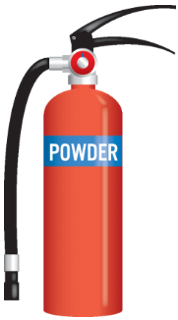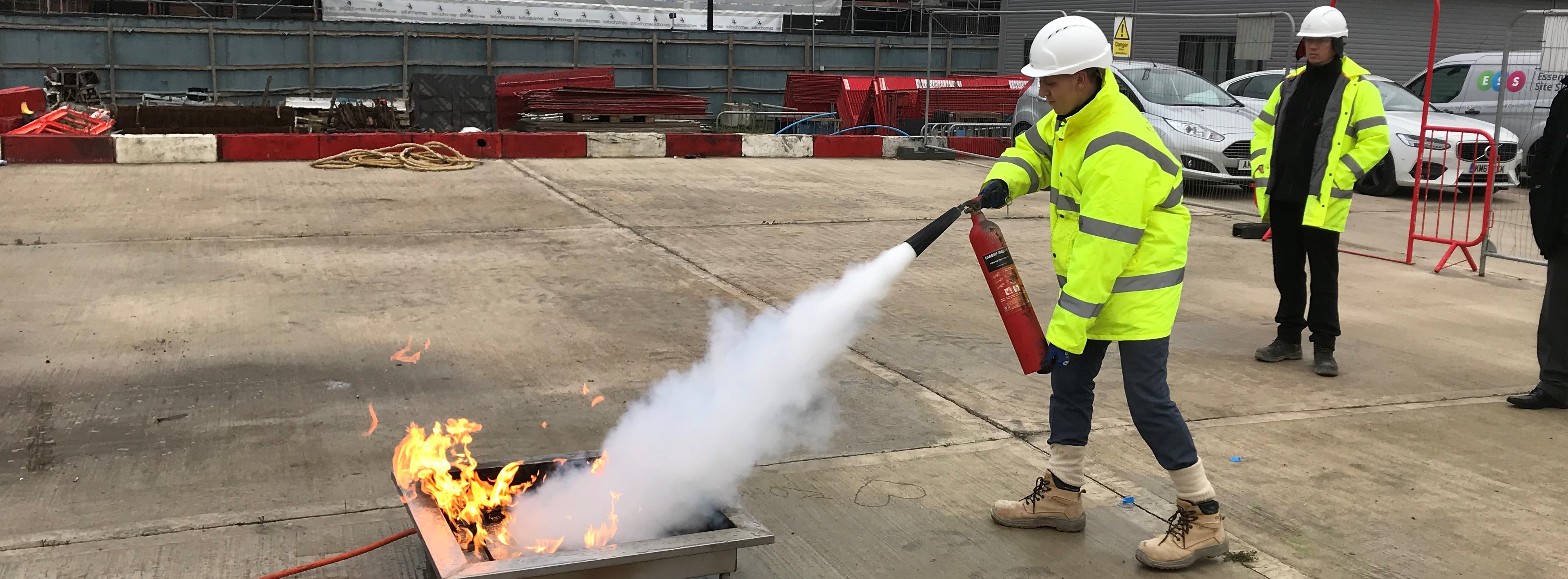Latest News
What Type of Fire Extinguisher Do You Need?
Posted on Monday, 2nd October 2023

Having the right type of fire extinguisher available can be vital in the outbreak of a fire. Using the correct equipment can help reduce the fire spreading, and ultimately save lives. In today’s blog we take a look at the different types of extinguisher available, what each is used for, and who needs training to use one.
What is a fire extinguisher?
Let’s start with the basics; fire extinguishers are tools used to put out or control small fires before they can spread further. There are a range of extinguishers available, all of which utilise different substances to extinguish fires. The best type of extinguisher to use will depend on the source of the fire and the environment where the outbreak has occurred.
Fire extinguishers should only be used on small fires. Attempting to put out larger fires with just an extinguisher will put the individual in a position of severe risk, and may even make matters worse. If a fire is quickly spreading or out of control, the priority should be evacuating the building as quickly and safely as possible, and contacting the fire brigade to handle the outbreak.
What are the 5 types of fire extinguisher?
There are five main types of extinguishers which all use different substances to combat fires:
- Water
- Foam
- CO2 (Carbon Dioxide)
- Dry-Powder
- Wet Chemical
Each type of extinguisher can only be used on specific types of fire. Using the wrong type of extinguisher may actually cause the fire to spread further or become more volatile. This is why it is integral to have all the correct types of fire extinguishers needed to combat the specific fire risks in every building.
What are the 6 classes of fire?
Fires are categorised in six different classes to help you work out which type of extinguisher you need to use:
- Class A - Ordinary combustibles (e.g. solid materials such as wood, paper, plastic)
- Class B - Flammable liquids (e.g. oil, grease, petrol)
- Class C - Flammable gases (e.g. methane, propane)
- Class D - Flammable metals (e.g. titanium, magnesium)
- Class E - Electronic equipment
- Class F - Cooking oils
As a basic guide on which type of extinguisher to use, you can consult the handy table below:
| Class A Ordinary Combustibles | Class B Flammable Liquids | Class C Flammable Gases | Class D Flammable Metals | Class E Electrical Equipment | Class F Cooking Oils | |
 | Water | ✅ | ❌ | ❌ | ❌ | ❌ | ❌ |
 | Foam | ✅ | ✅ | ❌ | ❌ | ❌ | ❌ |
 | Dry Powder | ✅ | ✅ | ✅ | ✅ | ✅ | ❌ |
 | CO2 | ✅ | ✅ | ❌ | ❌ | ✅ | ❌ |
 | Wet Chemical | ✅ | ❌ | ❌ | ❌ | ❌ | ✅ |
How do water fire extinguishers work?
One of the most common types of fire extinguisher is the water extinguisher. As the name suggests, these contain water which can be sprayed directly onto the fire source. This water has a cooling effect, reducing the heat and putting the fire out. However, if used on the wrong class of fire, water extinguishers can make matters much worse. Water extinguishers should only be used on dry and non-electrical fires as dangerous chemical reactions can be caused by using water on other classes of fire.
What fire extinguisher should I use for an electrical fire?
In the event of an electrical fire you should use a dry powder or CO2 extinguisher. Liquid based extinguishers, such as water, foam or wet chemical extinguishers, should not be used. Applying water to electricity can cause incredibly dangerous chemical reactions. This can lead to the fire spreading, becoming more volatile, or even starting additional fires in the area.
CO2 and dry powder extinguishers can be used on electrical fires as they don’t contain water. CO2 extinguishers emit carbon dioxide gas that counteracts the oxygen in the fire, preventing it from spreading. Dry powder extinguishers coat the fire in a thin layer of dust which interrupts the chemical reactions and stops oxygen from feeding the fire further.
What fire extinguisher should not be used in confined spaces?
Although CO2 extinguishers are incredibly helpful in combating electrical fires, they come with their own set of risks. Spraying too much CO2 can prevent those in the area having enough oxygen to breath, potentially leading to asphyxiation. This is particularly a problem in confined spaces. Because of this risk, it’s highly advised to use dry powder extinguishers in the event of an electrical fire in a confined space.

Who is responsible for using a fire extinguisher?
While you don’t need to have any specific training to use a fire extinguisher, it is advised that you only attempt to put out a fire with an extinguisher if you have had some form of training. As previously mentioned, using the wrong type of extinguisher, or using the equipment incorrectly, can actually increase the chances of serious injury or death.
If you want to be able to use a fire extinguisher effectively, why not looking into taking our Fire Extinguisher Training course? This is a practical half day course available for anyone who wants to learn how to use this equipment effectively and safely. Much of this content is also available for those who participate in our Fire Safety Awareness course, which provides a broad introduction to fire safety, including the theory of fire extinguishers.
While all workers have a responsibility when it comes to fire safety, workplaces are required by law to have a designated Fire Marshal/ Warden on site. A fire marshal’s responsibilities include putting emergency procedures in place, carrying out risk assessments, ensuring the correct extinguishers are available. and much more. To fulfil this role, it is essential for this staff member to have completed some form of fire warden training. You can find out more about fire warden duties in our blog ‘Who is responsible for fire safety at your workplace?’
Fire extinguisher training near me
At ESS, we offer a range of fire safety training to help your workplace prepare for, and prevent, the outbreak of fire. These include:
- Fire Extinguisher Training
- Fire Marshal / Warden
- Fire Safety Awareness
- Hotworks Fire Safety
- Level 2 Award in Fire Safety
To book your training, simply click on the course you're interested in and submit an enquiry.
In addition, we also offer a wide range of theoretical fire safety training via our e-learning platform. This allows workers to get fire safety training from the comfort of their own home, at a time and pace which works for them. These courses include:
- Fire Marshal Training
- Fire Extinguisher Training
- Fire Safety Awareness
- Fire Marshal for Care Homes
- Fire Safety for Care Homes
If you have any other questions about our courses, why not contact our training team directly? You can call the team on 0115 8970 529, or email us at info@essentialsiteskills.com.


